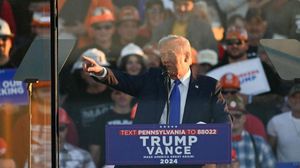Donald Trump is back with another ambitious plan, this time targeting the wallets of countless Americans. If he secures another term, his proposed tax reforms could exempt more than 93 million individuals from income taxes, representing a significant slice of the American electorate. This bold claim, which stems from estimates by CNBC, sets the stage for contentious political and economic debates.
According to estimates, Trump's tax plan, should it come to fruition, would particularly benefit groups including first responders, military personnel, veterans, and workers earning tips, ranging from restaurant servers to hairdressers. These potential tax breaks come alongside his broader goal of reducing reliance on the income tax system, instead aiming to fund operations through tariffs.
Historically, the late 19th and early 20th centuries were defined by tariffs before the modern income tax was introduced. Today, Trump envisions reinsting tariffs of 20% on all imports and 60% on products particularly sourced from China. While tariff supporters argue this could protect domestic industries, critics warn such plans are fraught with uncertainty, particularly about their economic viability.
Initially, it seems appealing—who wouldn't want to see their tax burden lifted? But financial experts caution against oversimplifying the benefits of Trump's tax cuts. The plan purports to generate relief for many, yet tariffs could push consumer prices up, affecting lower-income households more than wealthier Americans. Tariffs are inherently linked to how much consumers pay for goods; raising prices could offset the advantages of any tax cuts.
So, just how many Americans might be affected? A closer look reveals some staggering numbers. Social Security benefits are issued to about 68 million individuals each month, and around 30 million are veterans or public service employees. On top of this, roughly 4 million jobs involve tipping. Altogether, approximately 93.2 million Americans stand to gain from these proposed tax changes, which outlines around 38% of the total voting population eligible to cast their ballot in the upcoming election.
One of the big questions surrounding this plan is its feasibility. Experts estimate substantial declines in federal tax revenue, projecting losses of about $3 trillion from 2025 to 2034 should Trump's initiatives see the light of day. This scenario hinges largely on whether the Republicans can retain control of the House, something still up for debate.
Financial thinkers are wary of the broader picture as well. "Middle-income families might seem to win initially," suggested Michael Ryan, financial guru and founder of Michael Ryan Money. He pointed to potential increases to the standard deduction and the child tax credit as evidence of support. Yet, he highlighted how the wealthiest lobbied for most of the advantages hidden deep within the tax changes.
Echoing these sentiments, financial literacy instructor Alex Beene from the University of Tennessee at Martin highlighted the flimsy foundation of relying solely on tariffs to balance the lost tax revenue. This move might trigger inflation as companies are likely to pass higher operational costs onto consumers. The prospect of reviving low-wage jobs takes another hit, too, as pushing those wages up could create ripple effects across industries.
Trump has always been vocal about his admiration for older economic models, famously stating, “When we were smart... this is when the country was relatively the richest it ever was.” He seems eager to rekindle those ways, proposing other social safety nets be excluded from taxation. If he does, the immediate effects could be felt by millions, but the long-term balance remains concerning.
The enigma remains, if Trump’s plan can even take shape if he recaptures the White House. The legislative process is complex, and if the Republican majority shifts, significant pushback could stall his ambitious reforms. Not to mention, the inherent popularity of tax cuts cannot factor heavily when lawmakers are increasingly concerned about national debt, which could easily rise by $5.8 trillion over ten years under Trump’s projected economic model.
From every angle, it’s clear the proposed tax reforms push against the backdrop of history and future uncertainty. While millions wait to see whether they might get relief from taxes, the broader impact on the economy could lead to rising costs and persistent inflation. If anything, Trump’s tax proposals herald the reopening of age-old discussions about fiscal responsibility during election season.
With Election Day looming, it remains to be seen whether Trump's vision of economic revitalization will translate not only to tax cuts but to lasting affordability and growth, or if the hefty price tags leading to inflation will leave voters feeling disenchanted.



